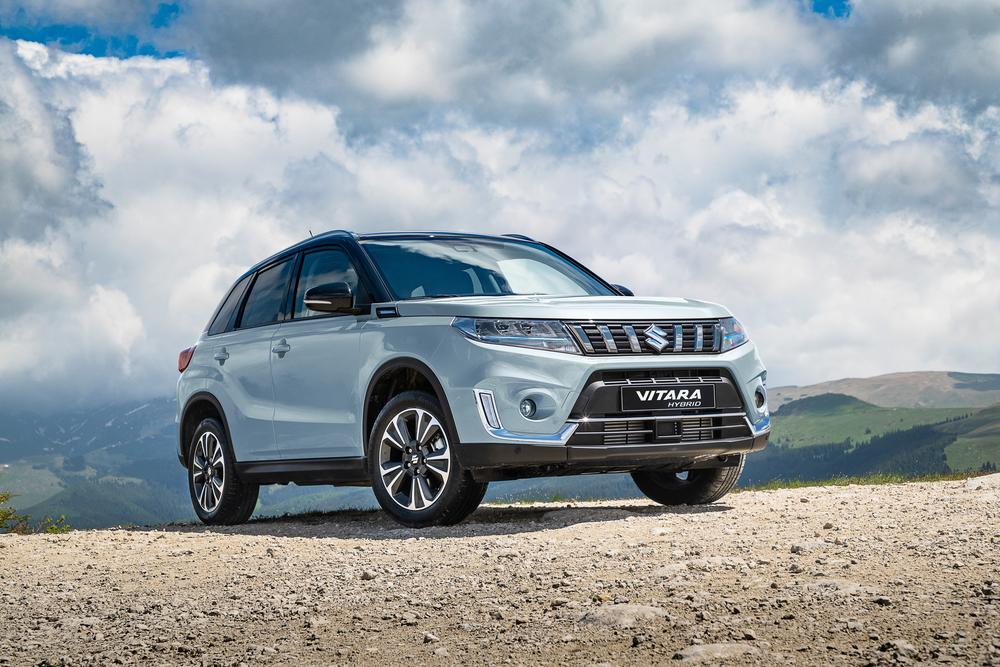17 Mar 2023
Suzuki Vitara A Highly Successful Global SUV

The Suzuki Vitara has been the vanguard of a blossoming compact SUV crossover market sector for several years
Arrival of the mild Hybrid version of the Suzuki Vitara broadens the appeal of what is already a highly successful global compact car.
The three-door first generation Vitara hatchback in 1988 heralded a new breed of small, affordable SUVs and soon became popular with its chic body design and four wheel driver functionality.
Today’s more advanced fourth generation version from the eighth largest car company in the world still embodies Suzuki’s sound ideas for producing vehicles that are highly appropriate to the market conditions. Suzuki follows the sho-sho-kei-tan-bi philosophy - which is Japanese for smaller, fewer, lighter, shorter and neater.
The company works on a quiet, polite, humble, family-firm demeanour that strikes an accord with New Zealand car buyers and saw the brand hit the number one spot for new car and SUV sales in February. While rivals may be bigger, techier and costlier, Suzuki is cleverly cornering much of the small car market.
The new Vitara Turbo Hybrid strikes the middle ground rather than an expensive leap into pure electric vehicles (EVs). Yet Suzuki is still spending close to $13 billion on a five year “electrification” based research and development programme that will result in several inexpensive and value for money pure EVs.
The iconic generation four Vitara was always going to be one of Suzuki’s success stories and its on-going buyer approval was never in doubt. The word Vitara originates from the English word “vital” and is associated with the owner’s active lifestyle.
A solid body design with a rugged look has been a strong point, marked by a grille that lines up perfectly with the headlights and the retention of the clamshell bonnet that was a hallmark of previous Vitaras.
The sharp shoulder line and angular bulge over the rear wheel arch earn approval as does the gently sloping roof line and good all-round visibility. Vitara incorporates timeless lines rather than a fashion statement that quickly fades.
Kicked-up body-side character lines and bonnet-side air outlets form motifs from the first-generation Vitara while shoulder lines run the full length of the body. Optimally designed bumper openings, flat underbody surfaces aid aerodynamics and the shaping of the door mirrors and front bumper edges were based on the results of airflow analysis.
Suzuki widened the market for the model by offering the choice of either two wheel drive or a sophisticated all-wheel drive ALLGRIP version with four selectable modes consisting of Auto, Snow, Sport and Lock. Buyers warm to the convenient high body configuration, good ground clearance and in the case of the ALLGRIP, a generous 18.2 degree approach and a 28.2 degree departure angle.
The Vitara’s CO2 emission levels are low thanks to clever engineering including the use of high tensile steel and other weight saving measures in the body. Vitara is one of the lightest SUVs in its class although the Hybrid weighs around 100 kg more than equivalent non-Hybrid Vitaras.
“Right from launch the accomplished current Vitara has earned acclaim for being a stylish design with compact, easy to manage dimensions, comfortable on-road performance as well as having competent off-road capability,” said Gary Collins, General Manager of Automobile for Suzuki New Zealand.
“The Vitara Hybrid is a clear reflection of Suzuki’s desire to offer a compact, affordable SUV that is well suited to the lifestyles and demands of the times,” he said. “The move to a self-charging hybrid enhances all the aspects of the vehicle that has made it so popular while also reducing emissions and fuel consumption”.
New Zealand market Vitaras are built at the Magyar Suzuki plant in Hungary where more than 3.6 million Suzuki cars have been made since 1991.
